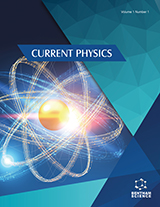Abstract
We encounter radiation in our daily life. Emission or transmission of energy
in the form of waves or particles is known as radiation. There are two types of radiation
– ionizing and non-ionizing. The types and interactions of non-ionizing radiation with a
medium, materials, or body tissue are discussed in this chapter. Non-ionizing radiation
has less energy than ionizing radiation; it does not possess enough energy to produce
ions or ionize body tissues and cells. Non-ionizing radiation includes Static fields,
ultrasound, and a part of the electromagnetic spectrum. Sunlight, mobile phones, the
earth’s magnetic field and electrical appliances are some of the common sources of
nonionizing radiation. Although these radiations have low energy, they have many
useful applications, especially in medicine. Non-ionizing radiations originate from
various natural and manmade sources. It has always been present and is all around us.
These radiations cannot destroy human tissues by ionizing body atoms, instead, they
can destroy body cells by excitations, heating, vibration, phonons generation, and
chemical changes because of the relatively low energy of the particles of nonionizing
radiation. Non-ionizing radiation has many beneficial applications, including uses in
agriculture, medicine, industry, and research. As the use of nonionizing radiation
increases, so does the potential for health hazards. In this chapter, we will look at non-ionizing radiation, the way it interacts with matter, and some of the potential biological
health effects produced by various types of non-ionizing radiation.













